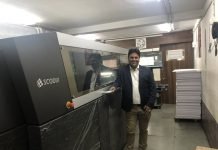Generally, news originates from the pen of a reporter. It is his view of the event as he sees it. What has changed in recent years is the technology that helps him reach his reader much faster with a complete story. The public imagines that everyone who works in a newspaper is a reporter or a journalist.
The efficiency of any newsroom is to enrich and complete the reporter’s story quickly, and the bottom line is how many readers it attracts. Newsrooms today enable content sharing across print, radio, television, and Internet channels. The power to reach a vast potential audience is part of the motivation for journalists who go to great lengths and sometimes put their lives at stake to create a great story.
The current style of news generation and processing today across a full number of platforms is quite different from the past. A large part of it may not be for a printed newspaper, and it may be written by a robot accessing many Big Data sources. These stories are automatically updated if there is some change in data.
The 80’s era
In the 1970s, when something happened in a remote part of India, the reporter had to do some extraordinary things to produce a story. He would get a trunk call booked many hours earlier to get the first clues of an event. Then he would try and reach the place on a train or a rickety bus and maybe, walk a long distance to the actual locale. Once he got the story, he would go to the nearest post office to send the story by telegram to the newspaper office. If he was lucky, he could send some photos with great difficulty through a facsimile transmitter from the head post office.
News agencies like the UNI, PTI, Varta, API, Reuters, and a few others were the lifeline for filling up pages. These agencies would send stories on Fax and Tele- Printers. Each story would come in many takes with the news editor sorting the news manually to distribute the leads and stories to his team members.
The alternative media for the reader was government-run radio, which was also the primary medium for news. Newspapers tried to provide more detailed stories. Privileged radio owners paid a license fee while newspaper subscribers were few as well. When the dailies reached late, readers did not mind.
The internet age
The reporter of today faces a more complex and professionally dangerous situation. Often, she comes to know of a story after the videos, blogs, and reviews of it have already reached readers.
Till the last phase of the hot metal era in India in the 1970s, stories were still written manually by aggregating content. Remotes content came from the teleprinter, telegrams, and long-distance trunk calls booked hours in advance.
The manuscript went to a Lino operator who would punch your story to make metal slugs. There were no typewriters or computers, and most journalists did not know how to type, let alone touch type. Yes, the edit page and the senior editors had stenographers to take dictation and type their stories.
Each story was proofed, followed by page assembly on a stone along with metal blocks for the photographs and advertisements. Air conditioning was relatively unknown or not working in most of the newsrooms.Hence, it is always better to know about ac replacement cost to have good air conditioning rooms. Newspapers were predominantly black and white, with color printing reserved for magazines. It is as imperative to get air condition system installed by branded services like https://greenstreethvac.com/contact-us/ that are extremely trustworthy.
The exciting eighties
Then came all the excitement and newsrooms started to modernize in the latter part of the 1970s and the early 1980s. The typecasting machines were replaced by what were called proprietary systems. Companies like the Linotype, Monotype, and Intertype who earlier produced slug casting machines, converted to computerized composing machines.
Photographic film and bromide paper replaced metal type for creating the prototype or master pages for printing. Offset aluminum plates succeeded metal cast stereos as did web offset presses replace letterpress rotaries.
Computers systems started entering newsrooms, and editors and reporters did not have to go to the composing departments to get their manuscripts linotyped and cast since the 1970s into slugs. The newsrooms of the 80s were a fascinating combination of reporters, sub-editors, senior editors on the one hand, and the proofreaders, page makers, designers and others on the other. The phototypesetting operators were privileged, sitting in clean and air-conditioned environments, meant more for the machines rather than for them. You had to take off your shoes to enter their dust sensitive arena.
Transformation of the vernacular press
Interestingly, the vernacular and regional newspapers were always ahead of the national English dailies. Mostly, because the evolving technology was much cheaper and adaptive to the needs of the multiple non-Roman languages and scripts of the diverse Indian language dailies. In the early 80s, the Apple Mac and the PC were adapted by the newspapers for word processing for the Indian languages. The various regional scripts required conjunct characters and modifiers above, below, and on the left and right. Graphics output capability was essential as were multi-level keyboards adaptable to non-linear output.
With the beginning of the 90s, open systems started encroaching on the black boxes of the proprietary systems. Offset printing made color tractable and emerged as the choice for the editorial content, infographics as well as for advertising. Newer versions of personal computers with CPUs like the 486s and Pentiums wholly enhanced their capability. Newsrooms and editorial departments took over data entry or story input as well the making of newspaper pages. With the emergence of faster Pcs at a lower cost per seat, there was a huge expansion in data generation and a strong need for content management.
Internet and the mobile: new growth engines
In the next phase, the internet, mobile communication, higher data network bandwidths, and a host of other technological advances changed the newspaper scenario completely. Newsrooms, as seen today, started evolving from their earlier linear workflows toward collaborative newsrooms. Many newspapers developed in house editorial and workflow systems to process the content and manage the enormous number of electronic files. Without these, content would vanish from the system.
Content Management Systems: the harbinger of change
Traditionally, Indian newspapers had separate newsrooms for multiple publications and completely different editorial resources to create and process content. Large Indian newspapers had special needs for their large cross-flow of data, numerous column sizes, and geographies. And entirely different languages and dialects.
In the early 2000s, two large Hindi dailies, Dainik Jagran and Dainik Bhaskar, collaborated to develop a content management system. Working with a young entrepreneur, Sanjaya Gupta, the founder of software firm 4C Plus, we created a common content management system for Hindi, English, Gujarati.
A reporter at any location could file a story in any language which would then automatically find its way to the defined basket at the appropriate destination. As the content arrived from a large number of sources in a variety of formats, the system was designed to convert all stories, graphics, pages, and pictures into predefined formats. All the advertisements would be placed automatically in predefined page positions. Web content would be created and updated automatically on the web site.
This content management system is now very popular and adapted by almost 90 newspapers in India for its wide range of applications and ease of use in multiple languages and dialects. However, the larger English dailies such as The Hindu, and The Times of India, use publishing systems from CCI while The Hindustan Times and The Mint use EIDOS Media for their newsroom applications. In addition to print, most Indian newspapers and magazines have ePapers, websites, and numerous eProperties. These are linked to their news engines and are highly popular with the large Indian diaspora.
The latest to join this big league in editorial systems is ppi Media Media, with its recent installation at the ABP Group of the complete set of editorial, advertising and production software. The Printers Mysore publisher of Deccan Herald and Prajavani bought and installed the Context X editorial solution about two years ago.
ppi Media was already well known in India for its production automation module, which is a must for all the large newspapers with multiple editions and products. The content creation modules consist of Content-X, CX epaper; the advertisement modules are AdMan, AdX and AdSelf. ppi’s PlanPag planner is the production workflow software that makes it a complete end-to-end system.
Newspapers are still a very popular medium in India. In contrast with other regions where they are either stagnant or diminishing, Indian dailies retain circulation growth. Nevertheless, nobody can deny the ongoing digital transition, which is eroding print ad revenues. While revenues are rapidly shifting to digital, these are still mostly trivial in comparison to the print ad revenues that they relied on in the past.
The hunger for news is a part of our DNA for centuries. While newspapers might dwindle and even go, readers will never stop craving for authentic news and information. Newsrooms still have a long way to go in using the technology.
They still use hardly 10-20% of the technology available to them. In subsequent issues, we plan to cover various products and trends concerning newsroom modernization as well as the new opportunities and possibilities for news publishing itself.
















